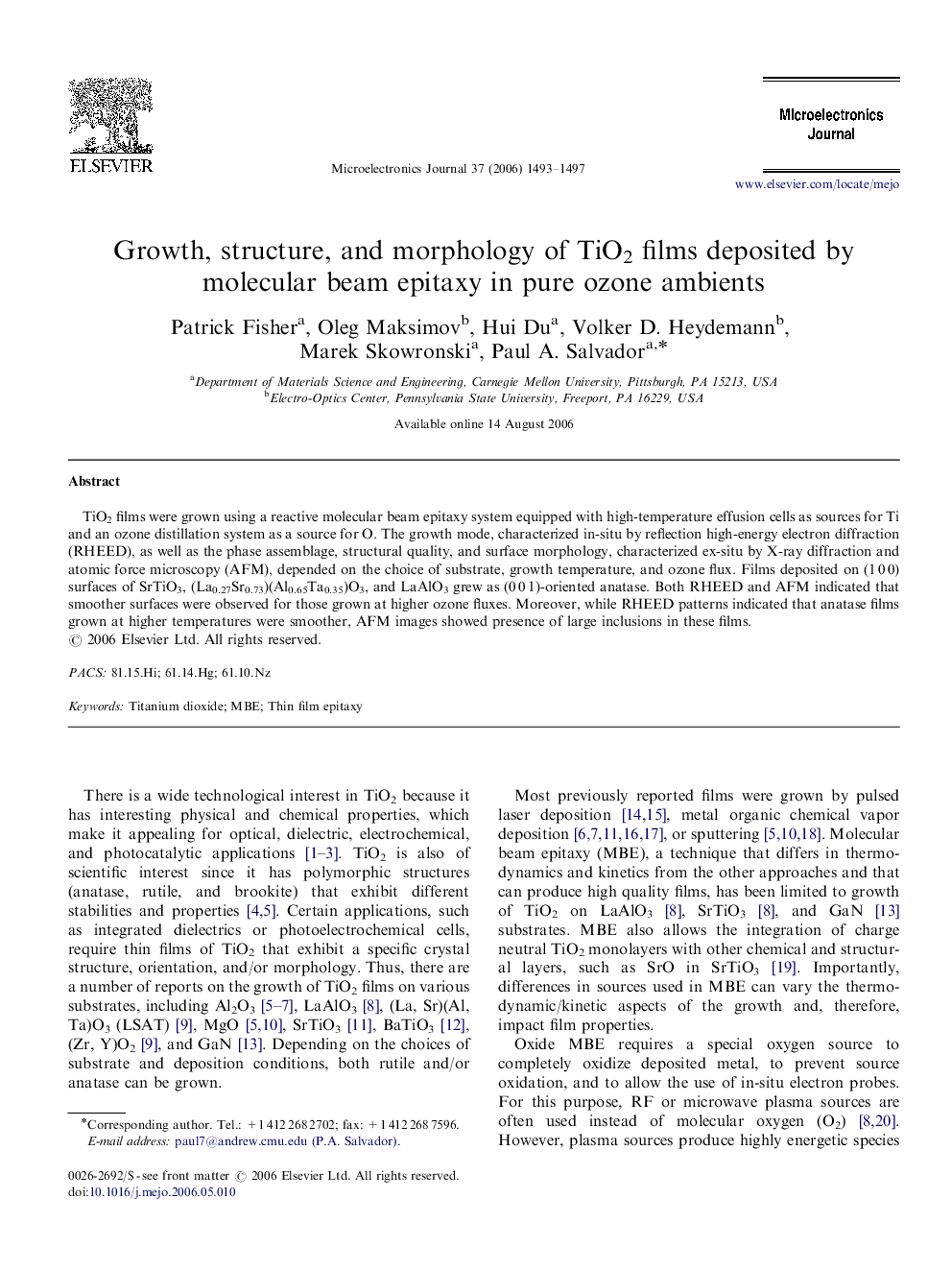| Article ID | Journal | Published Year | Pages | File Type |
|---|---|---|---|---|
| 548047 | Microelectronics Journal | 2006 | 5 Pages |
TiO2 films were grown using a reactive molecular beam epitaxy system equipped with high-temperature effusion cells as sources for Ti and an ozone distillation system as a source for O. The growth mode, characterized in-situ by reflection high-energy electron diffraction (RHEED), as well as the phase assemblage, structural quality, and surface morphology, characterized ex-situ by X-ray diffraction and atomic force microscopy (AFM), depended on the choice of substrate, growth temperature, and ozone flux. Films deposited on (1 0 0) surfaces of SrTiO3, (La0.27Sr0.73)(Al0.65Ta0.35)O3, and LaAlO3 grew as (0 0 1)-oriented anatase. Both RHEED and AFM indicated that smoother surfaces were observed for those grown at higher ozone fluxes. Moreover, while RHEED patterns indicated that anatase films grown at higher temperatures were smoother, AFM images showed presence of large inclusions in these films.
